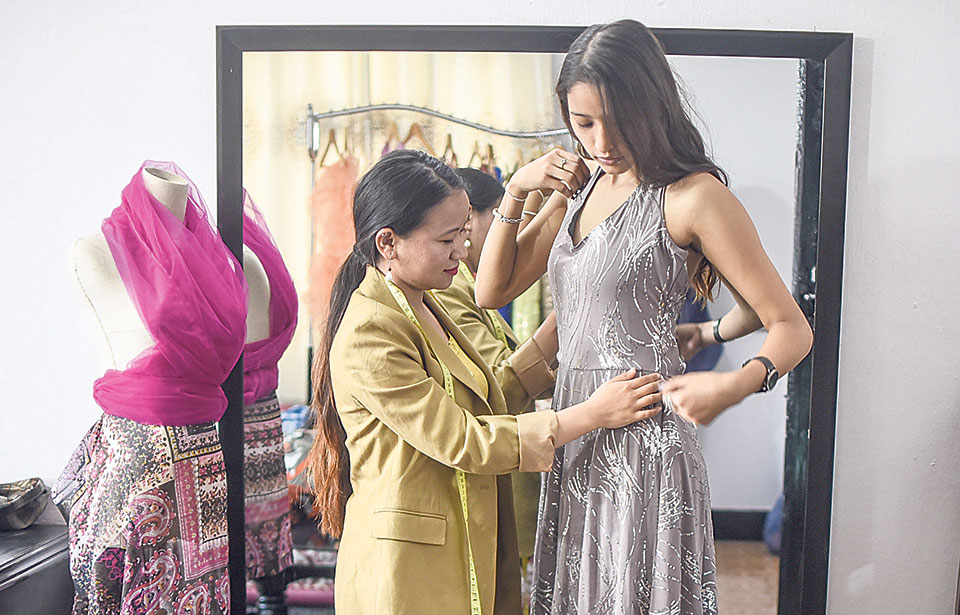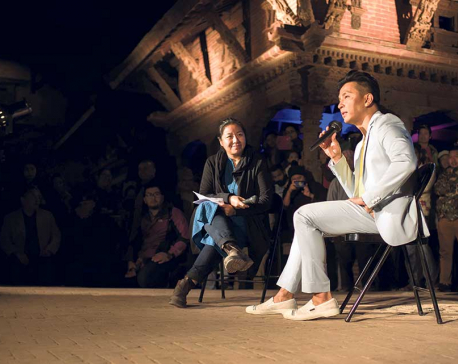
OR

How can the Nepali fashion industry make progress in 2020?
In a recent interview with The Week, designer Prabal Gurung said that everyone who is involved in the Nepali fashion scene has to be a stickler for quality for it to prosper. He also spoke about the power of empathy to create stunning designs. What else can the Nepali fashion industry learn from him and, by extension, the international fashion scene?
“I honestly believe that Nepali fashion industry has come a long way—when compared to even just a decade ago. But there are still many aspects of it that can be improved by taking in and learning from the international fashion scene,” says fashion designer Aagya Khanal. And Khanal’s sentiments regarding this are echoed by a lot of professionals working in the Nepali fashion industry.
Fashion designer and stylist Sadhana Ranabhat thinks the most important lesson we have yet to learn in order to propel Nepal’s fashion industry to greater heights is regarding the value of proper and timely investments. She thinks this will sustain the industry and provide sufficient funds for professionals to release good quality products.
She explains that although it might take some time before a business related to fashion starts generating profits, in the long term, the fashion industry is worth investing in. Ranabhat truly believes that people will really see the results of their hard work and investments in a few years time, provided they are willing to act now.
In a similar vein, Khanal states that Nepali brands should learn a thing or two about marketing and promotions by looking at the international brands. She mentions that even though a number of brands who have good designs and quality products have launched in the past few years, they haven’t caught mainstream attention yet because of their lack of knowledge in the field of marketing and promotion.
Another thing fashion choreographer Bipana Thapa wants professionals involved in the Nepal’s fashion industry to learn from the international scene is the ability to analyze the market and customers properly. She states that this will help brands release clothing that customers actually want to buy, thus increasing the brand’s worth and market value.
Another lesson a lot of people The Week spoke to want the Nepali fashion industry to learn from its international counterpart concerns maintaining the quality of the products made and sold. Dikshya Rajbhandari, second year fashion student, also agrees with this and says that a lot of Nepali fashion houses have to up the quality of their designs.
Rajbhandari says that most of the times designers are only making clothes for the sake of earning money. “It isn’t just about the stitching and cutting. Many designers knowingly buy cheap (but sparkly and shiny) fabrics for their designs and copy the designs from other international designers,” complains Rajbhandari.
The lack of experimentation in the Nepali fashion industry is another issue everyone The Week spoke to commented on. Designer and stylist Ojaswi Shrestha says that a lot of Nepalis have a very generic idea of what fashion stands for. So, they are not open to experimenting and trying out different genres of fashion. Shrestha claims that if more people could view fashion as a form of art and self-expression rather than something standard, the fashion industry could make a lot of progress and fast.
“There isn’t really a right or wrong approach to fashion. Because both style and fashion are very subjective ideas, you can play around with things that aren’t considered conventional and still be fashionable and stylist,” says Shrestha.
Adding to Shrestha’s sentiments, model Sujita Singh mentions that she thinks choreographers and art directors at fashion shoots and runways need to be more creative and work harder to come up with fresh new concepts.
“Photo shoots and runways have the power to influence the personal style and preferences of other individuals. If the style, clothes, makeup and hair seen at these events were more creative, more people would be accepting of these things and be ready to experiment with their own style,” says Singh.
Taking a different approach on the term ‘acceptance’, model Raunak Mallick says that the Nepali fashion industry needs to be more accepting of different forms of beauty. Mallick mentions that a specific size, skin color, body shape or height shouldn’t be considered superior or more fit for fashion over another—especially in this day and age where conversations about how strict the fashion industry’s scale of beauty is are being heard in all corners of the world.
Mallick does admit that because Nepal is so diverse culturally, this has never been that big of a problem here but he feels that the societal push for attaining fairer skin and the height requirement for modeling are two things that need to change.
Like Mallick, lifestyle blogger and model, Anisha Maharjan thinks its high time that the Nepali fashion industry started talking about pressing issues like accepting all forms of beauty and sustainability. Maharjan mentions that as happy as she is that these kinds of issues are slowly making their way into the scene over the past couple of years, she wants them to be more widespread.
“With the current uproar regarding sustainability and acceptance, I really think these issues will shape the future of fashion,” concludes Maharjan adding that she wants more Nepali brands to focus on being more environmentally friendly and sustainable.
anweitiupadhyay@gmail.com
You May Like This

Nepalis on global arena
There are many Nepalis who are doing and accomplishing great things around the world. As their list of achievements grows,... Read More...

I am gay and proud to be one: Prabal Gurung
Eminent American-Nepali fashion designer Prabal Gurung declared his sexual orientation at an event in the Kathmandu Valley on Thursday Evening.... Read More...





Just In
- MoHP cautions docs working in govt hospitals not to work in private ones
- Over 400,000 tourists visited Mustang by road last year
- 19 hydropower projects to be showcased at investment summit
- Global oil and gold prices surge as Israel retaliates against Iran
- Sajha Yatayat cancels CEO appointment process for lack of candidates
- Govt padlocks Nepal Scouts’ property illegally occupied by NC lawmaker Deepak Khadka
- FWEAN meets with President Paudel to solicit support for women entrepreneurship
- Koshi provincial assembly passes resolution motion calling for special session by majority votes






_20220508065243.jpg)






Leave A Comment